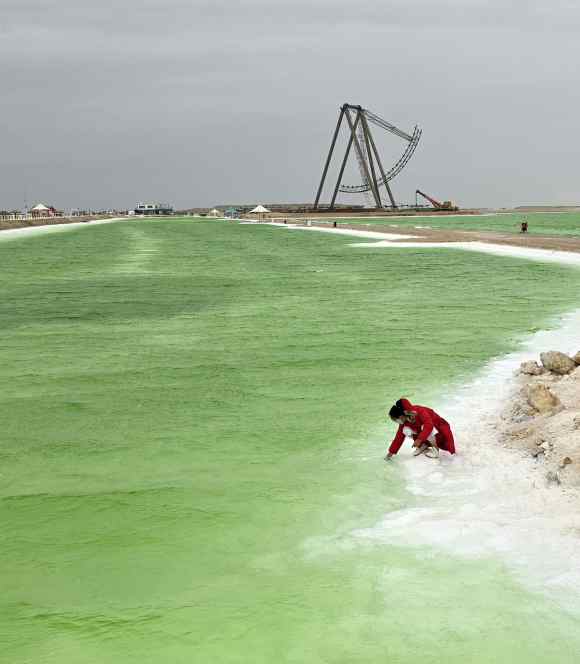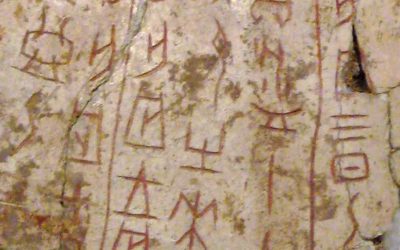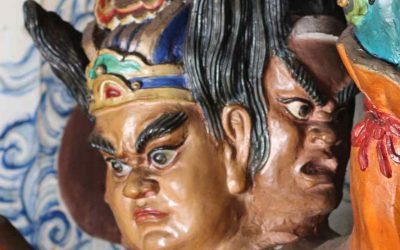Discover China’s Largest and Most Beautiful Salt Lake
The development of tourism and transportation in China is bringing to light places that were previously very hard to access and virtually unknown. Some of these destinations are beginning to gain a certain reputation, at least among those of us who keep up with the latest news in tourism and travel in China. One such place is Qarhan Salt Lake in Qinghai Province, just between Tibet and the Silk Road..
Better Than the Famous Qinghai Lake
While the province of Qinghai has long been known for its namesake lake—called Kokonor by the Mongols—this other lake remained little known and was only mentioned in a few very specific guides as a secondary or complementary visit. However, having visited both lakes, I believe Qarhan is far more beautiful and much more interesting. I had the bad luck of visiting on a cloudy day with very strong wind. I think I got a small taste of the famously unpleasant wind of the Changtang Plateau. At times, it really felt like the wind could blow me straight into the water.
A Beautiful Beach on a Stunning Lake
What visitors usually see is actually a beach on this enormous lake, which spans 5,800 square kilometers. Until the 1950s, no one paid much attention to it, although it was known to the Mongols living in the area, who gave it its name. Later, with the onset of economic development, it was discovered that a salt lake could provide many chemical compounds useful for the country’s growth. Several industries were established on its shores. Some of these still exist, and travelers pass through their production facilities on the way to the most beautiful part of the lake.

Emerald Green Waters on a Salt Beach
The beach stands out mainly for the intense green color of its waters and the contrast between the white salt along the shore, the vivid green hue of the water in that area, and the blue of the sky—when it is blue—or the gray, as it was during my visit, which also created a truly striking contrast. In keeping with the poetic spirit with which natural elements are often described in China, some of the most beautiful spots have been given names that allude to jade—found in this region—and to emerald, whose color the waters imitate.
A Visit Worth Making
This is actually the largest salt lake in China and the second-largest in the world. The lake is just 60 km from the city of Golmud. There’s a public bus in the morning and another in the afternoon, and hiring a taxi is not expensive (around 200 yuan for the round trip, including waiting time, in the low season of 2025). The visit can take about two to three hours, including the transfer from the entrance gate, but on a good day, it can easily be extended or even turned into a full-day excursion.
About me: I have spent 30 years in China, much of the time traveling and studying this country’s culture. My most popular research focuses on Chinese characters (Chinese Characters: An Easy Learning Method Based on Their Etymology and Evolution), Matriarchy in China (there is a book with this title), and minority cultures (The Naxi of Southwest China). In my travels, I have specialized in Yunnan, Tibet, the Silk Road, and other lesser-known places. Feel free to write to me if you’re planning a trip to China. The travel agency I collaborate with offers excellent service at an unbeatable price. You’ll find my email below.
Last posts
Yu garden in Shanghai: Archetype of Chinese garden
Pedro Ceinos Arcones. Yu garden in Shanghai: Archetype of Chinese garden. Dancing Dragons Books. 2019. (Excerpts from the book) The Yu Garden is Shanghai's main monument and the one that best summarizes the city's history over the past few centuries. A private garden...
The dog in China’s ancient tombs
Pedro Ceinos Arcones. La Magia del perro en China y el mundo. Dancing Dragons Books. 2019. (Excerpts from the book) The dog in China’s ancient tombs In China, dogs buried with their owners have been discovered in archaeological sites belonging to the most important...
Some philosophical schools in Buddha’s times
Peter Harvey. Buddhism: Teachings, History and Practices. Cambridge University Press. 2013. (Excerpts from the book. Page 11 and ff.) In its origin, Buddhism was a Samana-movement. Samanas were wandering ‘renunciant’ thinkers who were somewhat akin to the early Greek...
The origin of Chinese characters
The origin of Chinese characters in John C. Didier, “In and Outside the Square,” Sino-Platonic Papers, 192, vol. 1 (September, 2009) The technology of writing appears suddenly and morphologically fully developed on Shang oracle bones and, later, bronzes at about the...
The sacred Taishan mountain
Taishan Mountain, life and death in Chinese culture, according to the work of Edouard Chavannes Mountains are, in China, divinities. They are considered as nature powers who act in a conscious way and who can, therefore, be made favourable by sacrifices and touched...
A Taoist exorcism séance
'My friend is going to conclude an exorcism service this morning and, if you are really so interested, he hopes you can come and witness it.' He paused uncertainly. 'But I must warn 86 you that it is not a pretty sight. Really it is most unpleasant, disgusting and...










